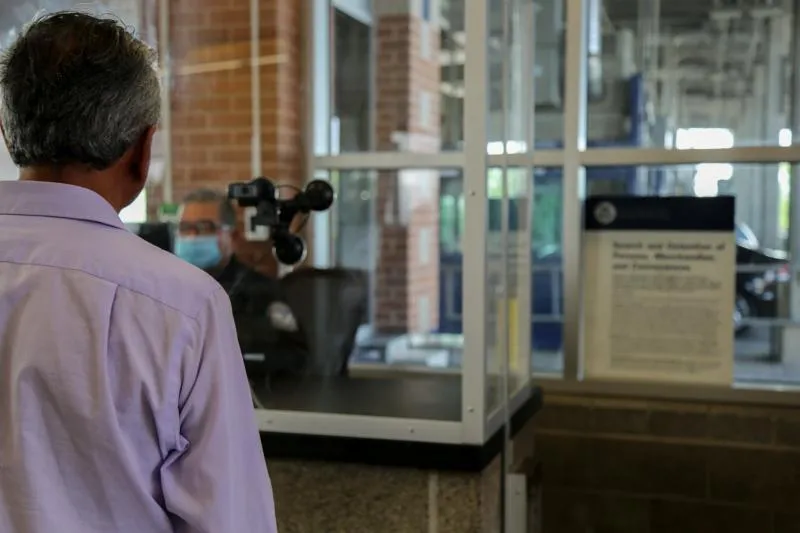Secure, seamless arrival process will support travel recovery efforts
EAGLE PASS, TX — U.S. Customs and Border Protection (CBP) has introduced Simplified Arrival at the pedestrian border crossings in the Eagle Pass and Del Rio ports of entry.

using Simplified Arrival.
Simplified Arrival is an enhanced international arrival process that uses biometric facial comparison technology to automate the manual document checks that are already required for admission into the United States. This process provides travelers with a secure, touchless travel experience while fulfilling a longstanding Congressional mandate to biometrically record the entry and exit of non-U.S. citizens.
The Eagle Pass Port of Entry is located at the Eagle Pass – Camino Real International Bridge, which crosses Piedras Negras, Coahuila, Mexico and the United States. CBP officers at EGP processed more than 2.1 million privately owned vehicles and more than 629,000 pedestrians in Fiscal Year 2020. The Del Rio Port of Entry is located at the Del Rio – Ciudad Acuna International Bridge, which crosses between Ciudad Acuna, Coahuila, Mexico and the United States. CBP officers at DLR processed more than 194,000 pedestrians and more than 1.1 million privately owned vehicles.
“Simplified Arrival at the ports of Eagle Pass and Del Rio brings the use of innovative, touchless technology, which not only facilitates the flow of legitimate travel, but also continues to strengthen our essential border security mission,” said Randy J. Howe, Director, Field Operations, Laredo Field Office. “CBP’s use of biometric facial comparison technology has been enhanced since its introduction in the summer of 2018, thus delivering this secure and efficient travel experience we see today.”
Simplified Arrival only uses the biometric facial comparison process at a time and place where travelers are already required by law to verify their identity by presenting a travel document. When a traveler arrives at the pedestrian lanes at Eagle Pass or Del Rio, he or she will pause for a photo at the primary inspection point. A CBP officer will review and query the travel document, which will retrieve the traveler’s passport or visa photo from government holdings. The new photo of the traveler will be compared to the photo previously collected.
The biometric facial comparison process only takes a few seconds and is more than 98 percent accurate. In addition, foreign travelers who have traveled to the United States previously may no longer need to provide fingerprints, as their identity will be confirmed through the touchless facial biometric process.
Simplified Arrival pairs one of the industry’s highest ranked facial comparison algorithms (as assessed by the National Institute of Standards and Technology) with trained CBP officers who are skilled at verifying the authenticity of travel documents. If a traveler cannot be matched to a photo on record using the Simplified Arrival process, the traveler will proceed through the traditional inspection process consistent with existing requirements for admission into the United States.
To date, more than 68 million travelers have participated in the biometric facial comparison process at air, land and seaports of entry. Since September 2018, CBP has leveraged facial biometrics to prevent nearly 600 imposters from illegally entering the United States by using genuine travel documents that were issued to other people.
U.S. travelers and those foreign nationals who are not required to provide biometrics and wish to opt out of the new biometric process may notify a CBP officer as they approach the primary inspection point. These travelers will be required to present a valid travel document for inspection by a CBP officer and will be processed consistent with existing requirements for admission into the United States.
CBP is committed to its privacy obligations and has taken steps to safeguard the privacy of all travelers. CBP has employed strong technical security safeguards and has limited the amount of personally identifiable information used in the facial biometric process. New photos of U.S. citizens will be deleted within 12 hours. Photos of most foreign nationals will be stored in a secure Department of Homeland Security system.
More information about CBP’s efforts to secure and streamline travel through facial biometrics can be found here.

